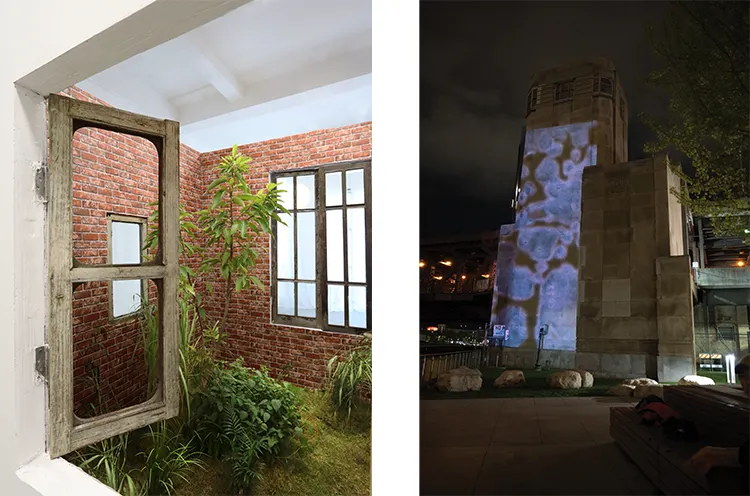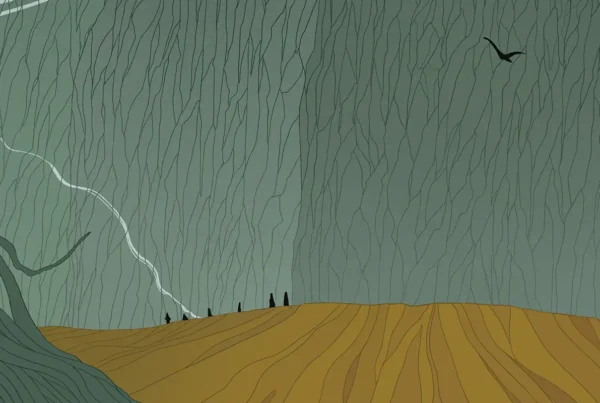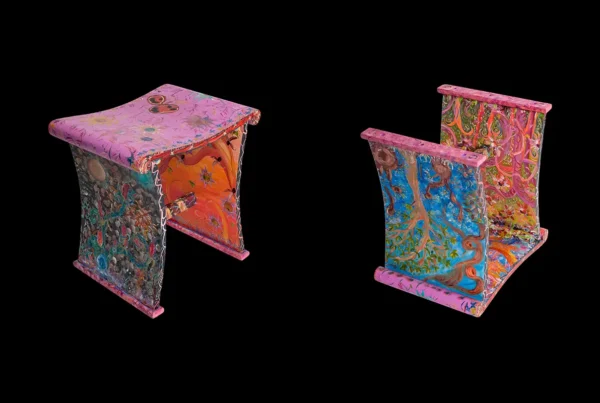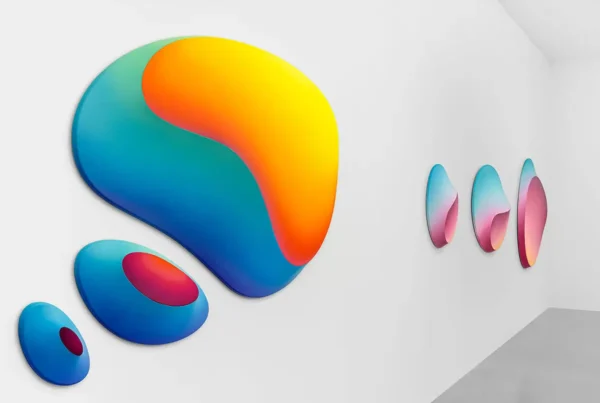“Art is a space of complete freedom—unrestrained by external forces—meaning you have to find what truly drives you.”
From Architecture to Artistic Freedom
Xingyu Huang’s artistic journey began within the structured world of architecture, yet it was a longing for creative freedom that ultimately propelled her toward fine art. Born into a STEM-oriented family, she grew up immersed in analytical thinking, shaped by the perspectives of her engineer parents. This early exposure to problem-solving and structural logic remained a cornerstone of her creative process, even as she ventured into more open-ended artistic disciplines. While studying Interior Architecture at the University of Edinburgh, Huang engaged deeply with the intersections of design and social structures, investigating how space influences human movement and sensory perception. These explorations instilled in her a fascination with the interplay between physical environments and emotional responses—an interest that would later evolve into the foundation of her artistic practice.
Upon completing her degree, she began to question the limitations imposed by traditional architectural work. Although her education had equipped her with technical expertise, she found herself drawn to the boundless possibilities of art, where creation was driven by intuition rather than external constraints. She viewed this transition as a process of self-discovery, a shift from predefined structures to an open-ended pursuit of ideas. In her perspective, art represents a space of true autonomy—one in which individuals must navigate their own motivations, sometimes confronting difficult existential questions along the way. This introspective approach led her back to the themes that had captivated her from the beginning: the intricate connections between sensory perception, materiality, and the natural sciences.
Determined to explore these concepts beyond the confines of architectural design, Huang embraced a multidisciplinary career path, working as a photographer, furniture designer, art director, and set designer. Her collaborations with globally recognized brands, including Wallpaper Magazine, Jordan, Coca-Cola, and Gabriele Colangelo, further refined her ability to manipulate space, material, and form. It was during the creation of a spatial installation for the Aranya Art Center that she had a transformative realization—fine art offered her the unrestricted space to integrate all her experiences, synthesizing architecture, design, and technology into a singular artistic vision. This pivotal moment solidified her commitment to art as a means of both exploration and expression, leading her to develop immersive works that blur the boundaries between human experience and scientific inquiry.
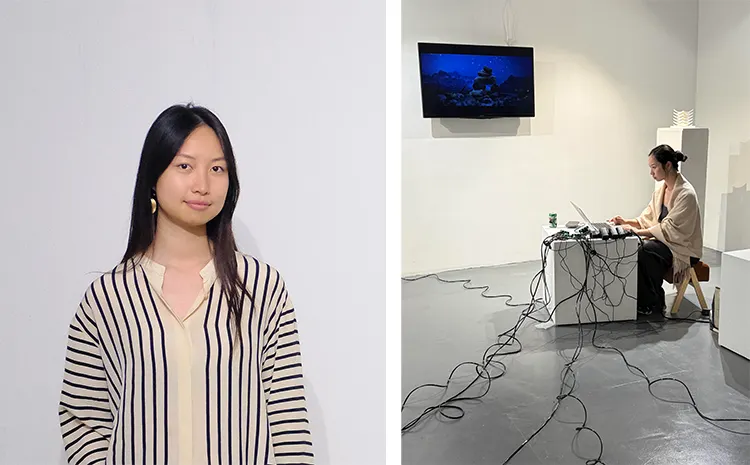
Xingyu Huang: The Intersection of Technology, Ecology, and Perception
Huang’s artistic practice thrives at the confluence of technology, ecology, and sensory engagement. Her work, spanning installations, kinetic sculptures, video, and sound, transforms physical spaces into immersive experiences that challenge the viewer’s perception. By integrating data-driven processes, experimental materials, and environmental themes, she constructs intricate visual and auditory landscapes that prompt audiences to reconsider the relationships between the biological and the artificial, the microscopic and the macroscopic. Her artistic philosophy is deeply rooted in the investigation of human and non-human coexistence, often emphasizing the overlooked connections between natural systems and technological interventions.
Public health emerges as a recurring motif in her work, explored through an intimate lens that juxtaposes personal experiences with broader social narratives. She frequently examines the phenomenon of somatization—the physical manifestation of psychological distress—using art as a medium to give form to invisible ailments. Her installations often juxtapose organic materials with digital interfaces, creating a dialogue between corporeal existence and mechanized interpretation. This approach highlights the ways in which the human body and mind respond to environmental pressures, shedding light on the complexities of perception, illness, and adaptation in contemporary society.
Her workspace reflects the diversity of her creative process, blending digital tools with hands-on experimentation. Computers and software such as Max/MSP, Arduino, After Effects, and Blender play a central role in her workflow, allowing her to program movement, sound, and interactive elements. Meanwhile, her studio is filled with unconventional materials—biological fabrics, microbial culture media, and powdered medicines—alongside traditional mold-making tools and electronic components. This hybrid approach underscores her commitment to bridging artistic expression with scientific inquiry, reinforcing her belief that art should not be confined by medium but guided by the conceptual framework of each project.
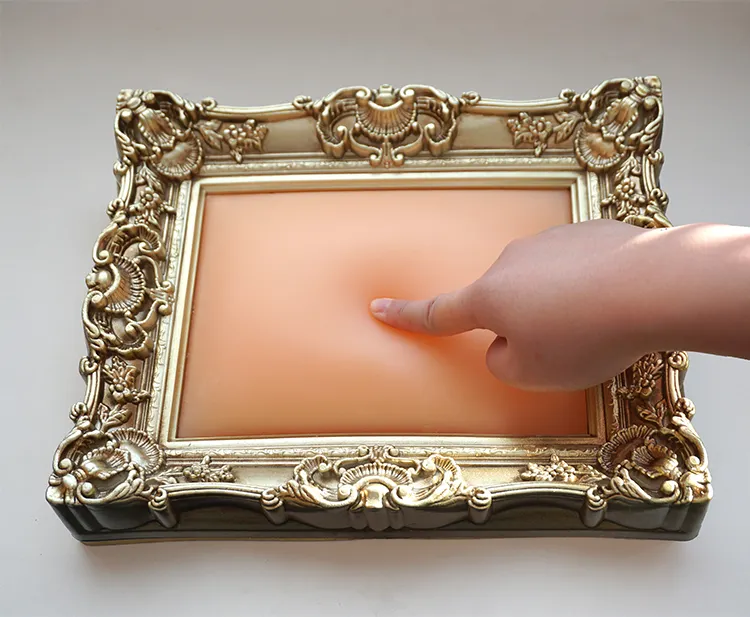
The Emotional Landscape of Sound and Space
Among Huang’s most significant works, Air Flow Between Us stands as a deeply personal and conceptually intricate installation. This sound-based piece translates recordings of personal confessions—spoken by individuals experiencing anxiety-related somatization—into the rhythmic fall of powdered medicine. The installation not only materializes the intangible nature of psychological distress but also highlights the dissonance between internal experiences and external perception. Inspired by her own struggles with an anxiety disorder while living in the UK, Huang initially mistook her symptoms—dizziness, trembling, and an overwhelming sense of impending doom—for physical illness. It was only through discussions with others that she recognized the psychological roots of her condition, a realization that informed the core of this work.
The piece underscores the isolating nature of mental health struggles, particularly in societies where such conditions are often misunderstood or dismissed. By transforming personal testimonies into a physical, sensory experience, Huang invites the audience to engage with the often-invisible realities of mental illness. The use of falling medicinal powder as a visual and auditory element reflects the paradoxical relationship between treatment and uncertainty—medicine, while intended to heal, often becomes a reminder of one’s condition. Through this interplay of sound, motion, and material, Air Flow Between Us acts as both a personal catharsis and a communal exploration of vulnerability, communication, and the shared, yet often unspoken, weight of psychological distress.
Beyond its individual significance, the installation speaks to broader societal themes, including the stigmatization of mental health and the complexities of linguistic identity. Huang is particularly interested in how language influences emotional expression—how one’s native tongue and second language shape their ability to articulate internal experiences. In this way, Air Flow Between Us becomes more than an artistic piece; it is a study of human connection, miscommunication, and the silent struggles that often remain unspoken. Through this work, Huang discovered the essential role emotions play in her art, reinforcing her commitment to creating pieces that resonate on both a deeply personal and universal level.

Xingyu Huang: Art as a Bridge Between Humanity and the Non-Human World
Huang’s current artistic explorations are expanding into the complex relationships between human existence and ecological transformation. One of her most ambitious projects to date—a large-scale installation set to debut at the Grey Center at the University of Chicago—investigates the shifting dynamics between marine animals and their microbial symbionts as ocean temperatures rise. This work, a collaboration with scientists, merges artistic practice with laboratory research, utilizing biological data to create an immersive sensory environment that mirrors the delicate balance of cooperation and self-destruction within natural ecosystems.
The installation employs a fusion of sound, light, and movement to translate scientific data into an experiential format. By capturing microscopic changes in marine symbiosis and rendering them into perceptible phenomena, Huang aims to dissolve the artificial boundary between scientific observation and emotional resonance. Her intention is to evoke a sense of empathy toward non-human life forms, encouraging audiences to reflect on humanity’s role in ecological change. Unlike traditional scientific visualizations, which often prioritize data over emotional impact, her work seeks to embody the tension between survival and collapse, portraying climate change not just as an abstract crisis but as a lived, sensory reality.
At its core, this project reflects her long-standing interest in challenging anthropocentric perspectives. She envisions a future where art and science collaborate more seamlessly, allowing for deeper explorations of the symbiotic relationships that define life on Earth. This concept of interconnectedness—between disciplines, species, and sensory modalities—remains central to her evolving practice. Whether through architectural space, kinetic installations, or biological experimentation, Huang’s work continues to push the boundaries of perception, inviting audiences to engage with the unseen forces that shape both human and non-human existence.
